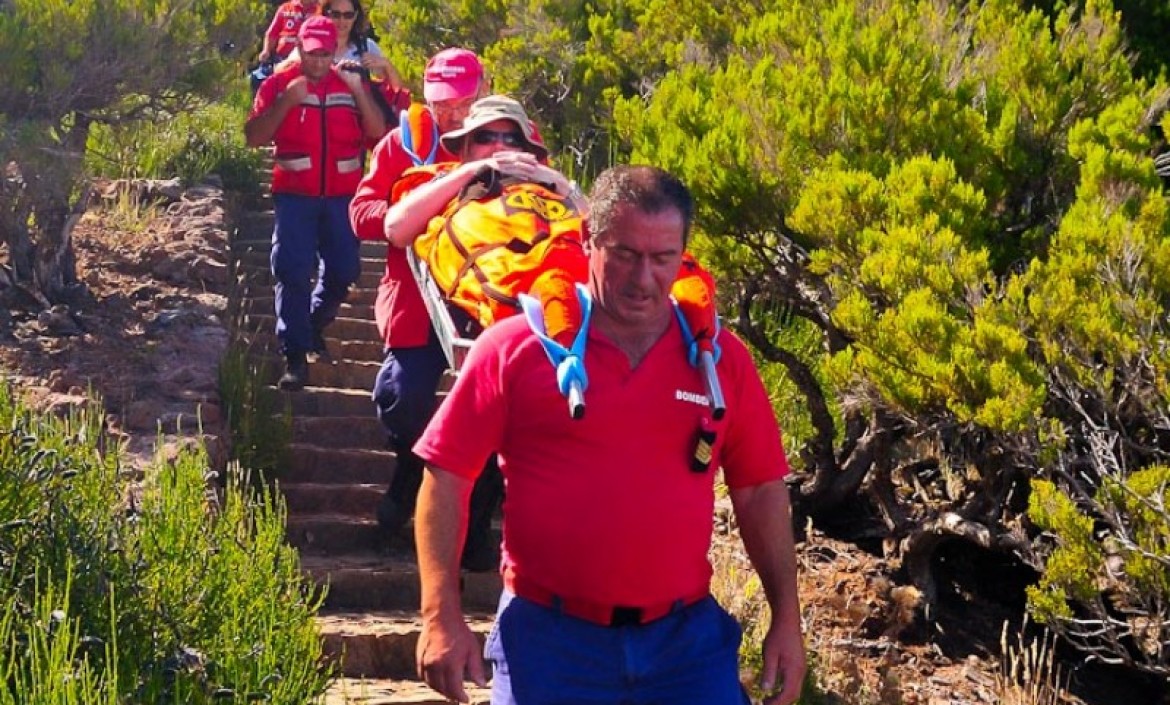Mon, 17 Jun 2019

Every year thousands of tourists land in our beautiful Madeira with the main goal of hiking along the endless “levadas” and trails carved in our mountains.
And, sadly, year after year a few – mostly – avoidable accidents show us that mountains, regardless of being in a Sub-tropical Island in the Atlantic or in the Himalayas, are dangerous environments for human beings.
How do we protect ourselves against those potential fatalities? Well… mostly by knowledge.
As the Americans wisely point out… the more you know the better.
Dangers in the mountains are diverse. And they often change with the mountains themselves. The natural conditions, the geological particularities and the climate, are deeply related to the various risks we may face while walking on higher grounds. After all, you cannot expect to be facing the same conditions and environmental aggressions in the mountains of Madeira as you would in Antarctica, right?
As different as these adverse situations can be, if you find yourself facing them, that means that somewhere, somehow, something has already failed in your hiking planning.
Confusing? Allow me to explain:
Regardless of geographical location and climatological particularities, dangers in mountains are classified in two main categories: objective and subjective.
Objective dangers in mountains are the ones caused by natural factors, for example: avalanches, rock falling, lightning storms, etc. Subjective dangers, on the other hand, are the ones associated with the human factor, and among them we may have lack of preparation, bad equipment, improper technique, etc. Some mountaineers, philosophically, claim that most of the objective risks in mountains are in fact subjective ones, simply because if a person was properly prepared, he or she wouldn’t expose herself to that risk to start with.
The most common accidents in Madeira’s mountains are falls. And most of them could be avoided. A combination of the frequent slippery pathways along the “levadas” with the distraction of looking at a bird or a beautiful flower is responsible for a few accidents, year after year, particularly on the more exposed trails. Often with disastrous consequences. Rock falls and landslides are also risk factors within Madeira’s natural world, as well as fog and heavy rain showers, particularly in the winter months.
A sudden decrease in air temperature, from daytime to nighttime, is a common reality of high altitudes. In our mountains, this daily variation is also present. The risk of hypothermia is, therefore, ever-present if you decide to hike in the mountains of Madeira during the colder seasons. So dress accordingly. Besides that, walking along Madeira’s natural world is a pleasant experience for thousands of hikers, as long as they stick to the official trails, all of them clearly marked and charted.
And if you follow a few cardinal rules and use your good judgment and common sense, those same experiences can also be agreeable for you.
Receipt for that?
Well, for starters:
- Reconnaissance (Recognize the trail and study it, resourcing to topo charts and trail guides)
- Read and analyze the weather forecast for the hiking day and the meteorological tendencies for the upcoming days.
- Check with the authorities (Park Services, Rangers, Forest Police, Fire Fighters) and get from them some valuable first-hand information regarding the conditions along the trail: is it safe? Risks along it? Inform them about your planned hike with departure Time and location and Expected Time of Arrival to your destination.
- Equip yourself properly. Use adequate and colorful clothing (contrary to hunting, in mountain sports seeing and being seen is paramount!). Propper footwear is very important. After all, you rely on your feet for walking, right? Trail shoes are ok for summer. Hiking boots are a safer bet for all seasons.
- Learn the basics of land navigation. Knowing how to use a topographic chart and a compass in the field is of the utmost importance. GPS recievers are becoming common and cheaper day by day, but don’t rely on them solely. GPS signal is effective mostly on open ground, but its errors increase in the deep valleys of Madeira. Also, their autonomy is still far from perfect. You don’t want to be caught in a foggy mountain top with a GPS receiver that is showing you the “weak battery” signal, do you? Remember: when things get rough, simplicity is everything. Always revert to basics. So… learn to use a chart and a magnetic compass for orientation.
- A pair of hiking poles (or a hiking stick – in Madeira called “bordão”) can do wonders to help you keep up the pace and remove a bit of strain from the legs. Take them along.
- A Topographic chart and compass should be with you at all times.
Sometimes things can go wrong regardless of all the preparation. When you face yourself with an emergency situation, the proper awareness and knowledge (particularly in first-aid and rescue) we spoke of in the beginning, will make a difference to improve your chances of survival.
In those circumstances, to improve your chances of success, always bring along:
A small first-aid kit;
A mobile phone;
A survival blanket;
A small torch;
A whistle;
One heliographic signaling mirror.
All those cheap items are the front line of any survival kit. The small weight and volume they take up, are more than reasons enough to always bring them with you, in the upper pocket of a backpack. Don’t skimp on this matter. They can, literally, save your life.
Happy hiking!

